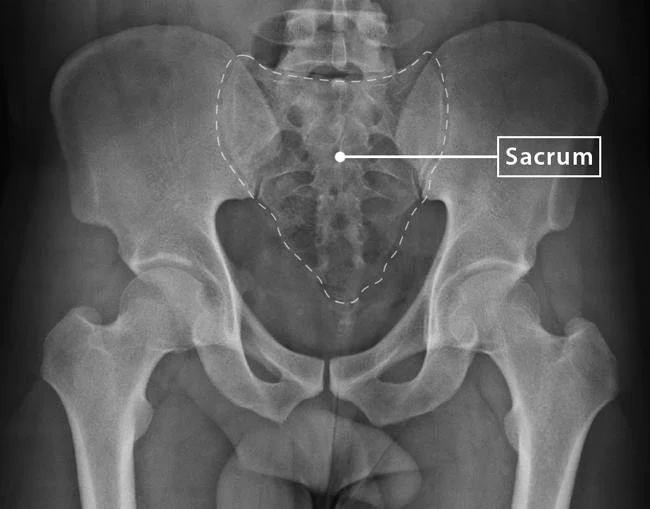Is Your Sacrum Calling for Attention?
The overlooked anchor that affects how you sit, walk, and feel grounded.
Ever feel like something’s “off” in your lower back or pelvis—but you can’t quite pinpoint what?
If sitting feels stiff, walking feels uneven, or you’re noticing tailbone pain, your sacrum might be trying to get your attention.
This month, we explored this powerful structure in one of our most popular posts—and why it deserves a closer look in your movement and healing journey.
What Is the Sacrum?
The sacrum is that triangular bone at the base of your spine, nestled between the two sides of your pelvis. It’s not just a connector—it’s a shock absorber, movement regulator, and fascial anchor.
Wrapped in layers of dense connective tissue (fascia), the sacrum plays a key role in:
Transmitting force between the spine and legs
Absorbing impact from walking, running, or jumping
Stabilizing your pelvic floor and core
Supporting posture and spinal alignment
When this area is balanced, it helps you feel grounded, fluid, and stable. But when the fascia around it gets stuck, things can unravel fast.
Signs Your Sacrum Might Be Stuck
Sacral tension often shows up subtly, like:
Low back or SI joint pain
Pelvic instability or tightness
Discomfort sitting or standing for long
Hip or leg asymmetry when walking
A general sense of disconnection from the lower body
It’s easy to mislabel these symptoms as just “tight hips” or “a weak core”—but the issue might live deeper in the fascial web around your sacrum.
Fascia: The Hidden Player
Fascia isn’t just wrapping—it’s responsive tissue that adapts to your life: stress, injury, posture, movement, even emotion.
When fascia around the sacrum becomes dense or dehydrated (often due to sitting, past injuries, or childbirth), it can limit mobility and create a ripple effect through your spine, pelvis, and nervous system.
How to Restore Sacral Function
You don’t need aggressive adjustments. What you do need: slow, fascia-aware work that invites space and responsiveness back into the system.
Try this fascia-focused approach:
Gentle pelvic tilts and sacral rocks to invite mobility
Myofascial release or manual therapy around the sacrum, glutes, and hip rotators
Breathwork with pelvic awareness to re-engage the deep core
Somatic movement that explores spirals, ground reaction, and sacral glide
Avoid long periods of sitting without breaks—move often, even if subtly
Your Body’s Anchor Point
The sacrum is central not just anatomically—but energetically. It supports your sense of groundedness, stability, and ease in motion.
If your lower body feels disconnected, your nervous system frazzled, or your gait feels clunky… it might be time to listen to what your sacrum is saying.

